_after_crash_landing.jpg)
On the 17th of October 2019, a PenAir commuter plane overran the runway in Unalaska, Alaska, narrowly escaping a plunge into the icy waters of Dutch Harbor. But disaster, unfortunately, was not avoided, as the left propeller disintegrated and sent a loose blade slicing through the cabin, killing a passenger and injuring several others.
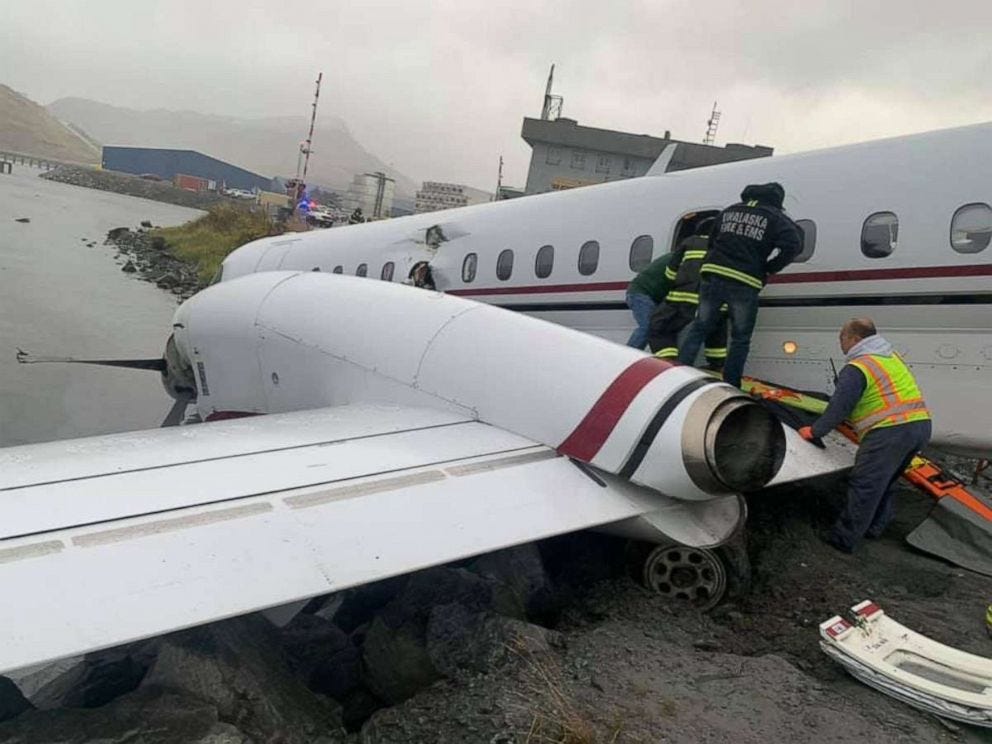
For experienced investigators, human error would have been the prime suspect, as it is in most runway overrun accidents. But when the NTSB sat down with the pilot, he delivered a bombshell: as the Saab 2000 hurtled down the runway, he stepped on the brakes, and nothing happened! An examination of the plane’s braking system revealed that he was telling the truth.
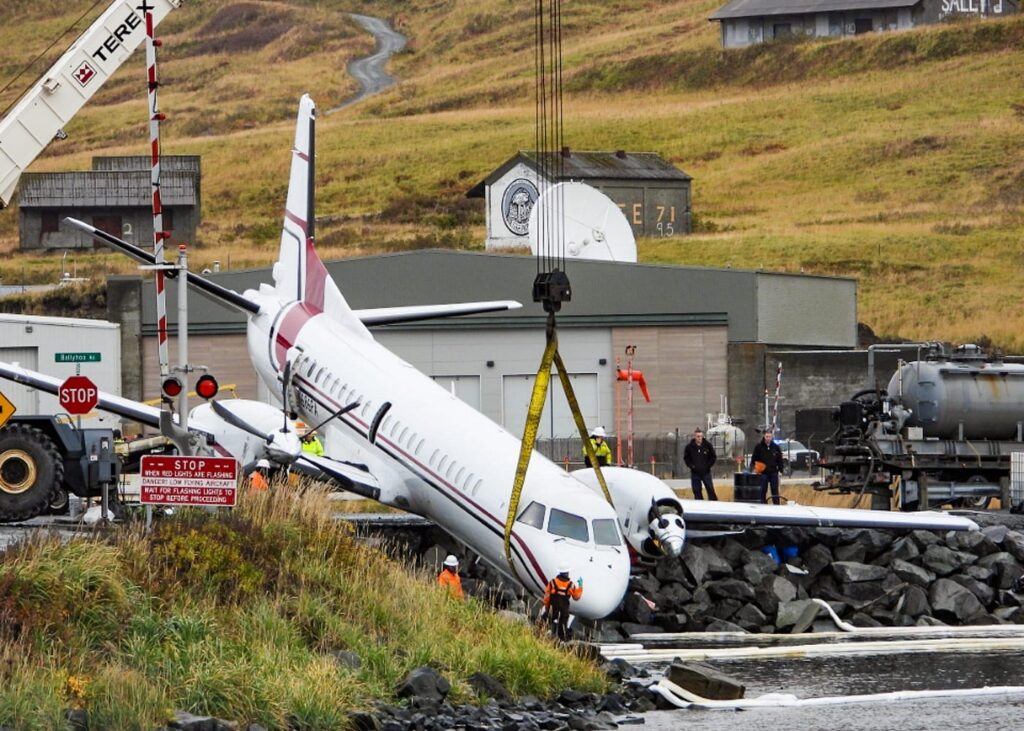
In fact, someone had wired the anti-skid system backwards, a massive error that caused flight 3296 to lose almost all braking power right when it was needed most — during a dangerous landing in a tailwind that exceeded the manufacturer’s limit. Following the trail of evidence deeper, the NTSB found that the airline’s dysfunctional management had created an environment in which 42 passengers and crew could be dispatched aboard a plane with a fatal flaw, to an airport where neither the plane nor the pilot should have been allowed to land.
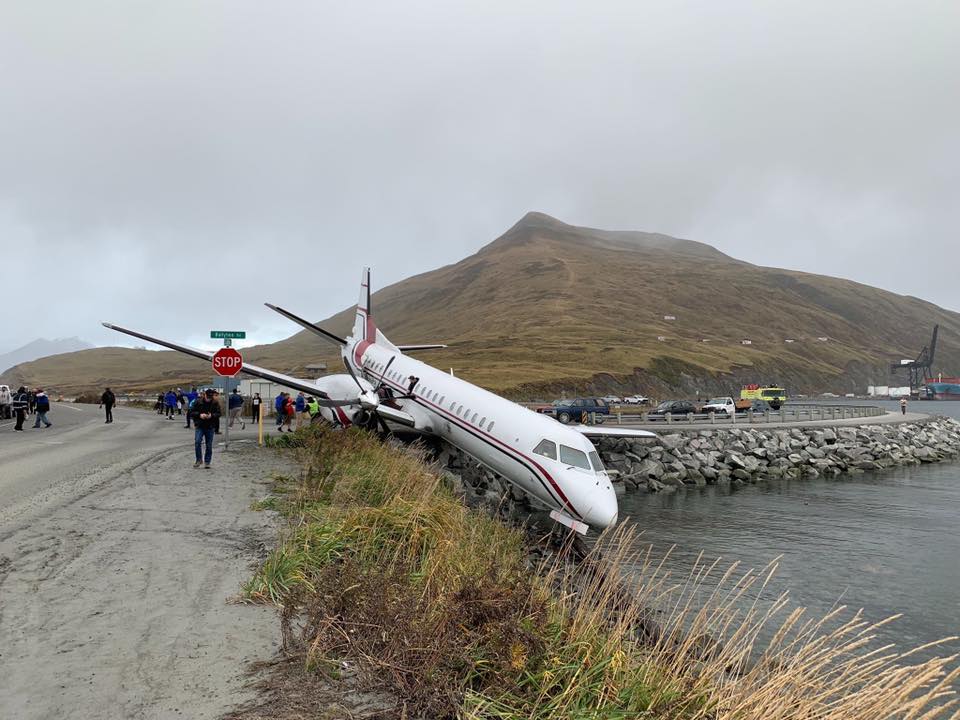
Since the dawn of commercial aviation, Alaska has been one of the most challenging and lucrative airline markets. Hundreds of isolated communities, cut off by vast distances and a lack of roads, rely on air travel for their very survival. The hardy pilots who choose to fly to these scattered villages must contend with terrible weather, poor infrastructure, and dramatic topography, giving Alaska a reputation as a final frontier for aviation safety, a place where, it seems, no one is more than one or two degrees of separation from someone who died in a plane crash. But by the late 2010s, the danger had largely been consigned to small private and charter flights, while the scheduled airlines extended fatality-free runs from years into decades.
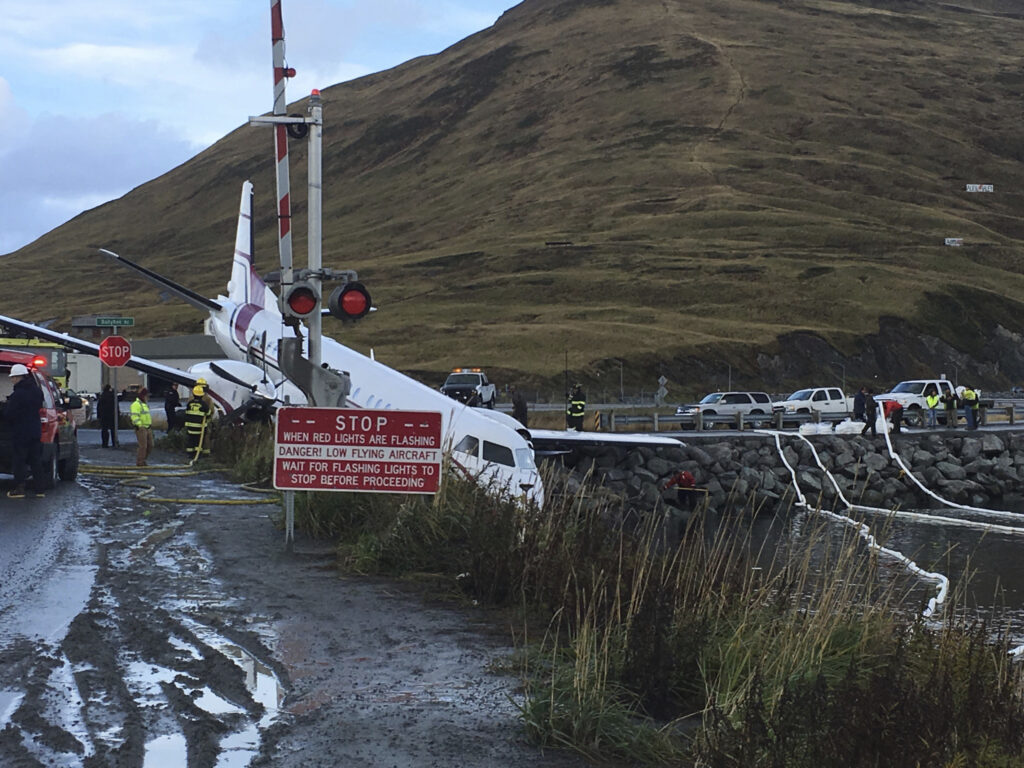
On the 17th of October that year, with the merger already well underway, a PenAir aircraft and crew prepared for a regularly scheduled flight from Anchorage to Unalaska, a town of about 4,000 people in the eastern Aleutian Islands. Unalaska is home to Dutch Harbor, the most productive fishing port in America, an institution which so dominates the town’s identity that locals are more likely to say that they’re “going to Dutch Harbor” (or just “Dutch”) than to Unalaska.
Flight 3296 to Unalaska would be operated by a Swedish-made Saab 2000, a midsized twin turboprop with room for about 50 passengers. Today it would carry 39, including an entire high school swim team and their chaperones. Three crewmembers brought the total to 42, including the two pilots, Captain Paul Wells and First Officer Justin Lunn. The 56-year-old Captain Wells had over 14,000 hours of experience flying in Alaska, but he had only recently been hired by PenAir and was new to the Saab 2000, with only 131 hours on the type, and the 39-year-old First Officer Lunn had about the same number.
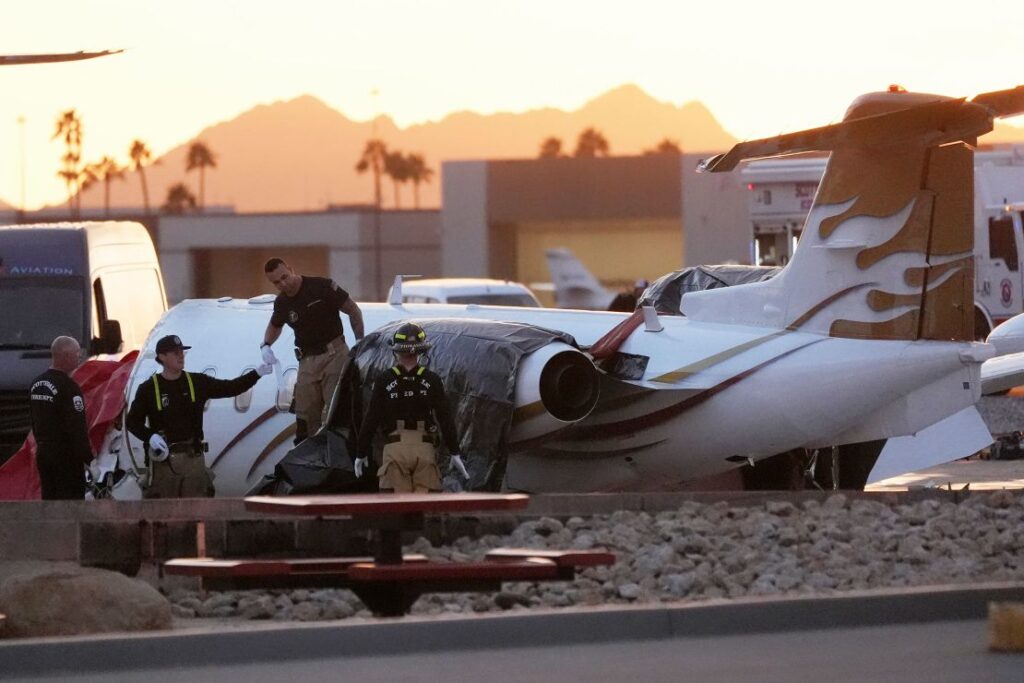
In Anchorage at around 14:00, while inspecting the plane for its 15:10 flight to Unalaska, First Officer Lunn noticed that the outboard tire on the left main landing gear had developed a bald spot. Whipping out his phone, he took a photo and returned to the cockpit to show it to Captain Wells, who examined the damage and compared it to the company limits on tire wear depth. According to PenAir guidelines, the tire was okay to fly as long as it “wasn’t showing cord,” and since the bald spot appeared to be confined to the tread, he concluded that they could proceed with the flight.
Sometime later, the dispatcher briefed the pilots about the weather conditions in Unalaska. A storm was moving in that day, with winds at 15 to 25 knots out of the west, broken clouds, and periodic light rain forecast for the airport. According to PenAir rules, a captain with less than 300 hours on the aircraft type could only be dispatched if the forecast wind plus half the gust margin added up to 20 knots or less, and if the forecast was close to this value then the pilot and the dispatcher needed to explicitly agree that it was safe to fly. But while the wind at Unalaska that day was right at the edge of the acceptable value, Captain Wells and the dispatcher agreed to conduct the flight without any apparent hesitation.


